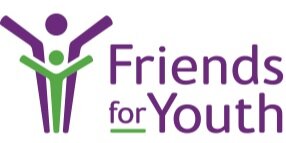Domestic Violence Awareness Month
In the shadow of our homes, behind closed doors, often lies a cruel reality. Domestic violence, with its intricate web of manipulation, suffering, and skewed power dynamics, impacts families in indelible and devastating ways. October is Domestic Violence Awareness Month, and I invite you to explore the complexities of family violence and this grievous truth that many endure.
Although the definition of domestic violence has evolved throughout the years, the term itself did not exist prior to the 20th century. The word violence is often associated with physical force, however domestic violence comes in many forms. According to California's Domestic Violence Advisory Council the definition of domestic violence is:
A spectrum and often a pattern of behaviors that includes physical, sexual, verbal, emotional, and psychological abuse and/or economic control used by adults or adolescents against their current or former intimate partners in an attempt to exercise power and authority, which has a destructive, harmful effect on individuals, the family, and the community.
In the 19th century, domestic violence was widely regarded as a private matter amongst family members. There were no laws at the time that criminalized or banned domestic abuse. The government did not formally intervene until the early 20th century when federal and state laws were enacted to protect victims of domestic violence. Despite standing legislation acknowledging domestic violence as a crime, perpetrators were rarely prosecuted.
America's attitude towards domestic violence rapidly progressed during the end of the 20th century. Multiple social movements such as the Women's Movement brought more awareness towards violence in the household. In more recent years, Congress passed the Violence Against Women Act (VAWA) in 1994— to create programs and open resources for victims and prosecute perpetrators of domestic abuse and violence— and has continued to strengthen it in subsequent years.
As stated in CDC’s 2011 report, an estimated 10 million Americans experience some form of domestic violence annually. It is important to recognize the signs of domestic violence so that you can take action to protect yourself and someone you love. The National Domestic Violence Hotline is available 24 hours a day, 7 days a week via phone call or online chat. It is open to anyone seeking resources, information, or support with their personal relationships.
National Domestic Violence Hotline: 1(800)799-7233
Black, M. C., Basile, K. C., Breiding, M. J., Smith, S. G., Walters, M. L., Merrick, M. T., & Stevens, M. R. (2011). National intimate partner and sexual violence survey. Atlanta, GA: Centers for Disease Control and Prevention, 75.
California Department of Public Health. (2020 April 27). Domestic Violence/Intimate Partner Violence. https://www.cdph.ca.gov/Programs/CCDPHP/DCDIC/SACB/Pages/DomesticViolenceIntimatePartnerViolence.aspx
The White House. (2022, March 16). Fact Sheet: Reauthorization of the Violence Against Women Act (VAWA). The White House. https://www.whitehouse.gov/briefing-room/statements-releases/2022/03/16/fact-sheet-reauthorization-of-the-violence-against-women-act-vawa/
Ellen Tran is a Fall Intern at Friends for Youth. She is majoring in Justice Studies, with a concentration in Criminology. She is graduating Fall 2023 and plans on continuing with graduate school, where she will possibly do a dual master program in Criminology and Statistics/Data Science. Ellen is heavily invested in promoting others’ welfare, involving herself in both sectors of healthcare and social work.

